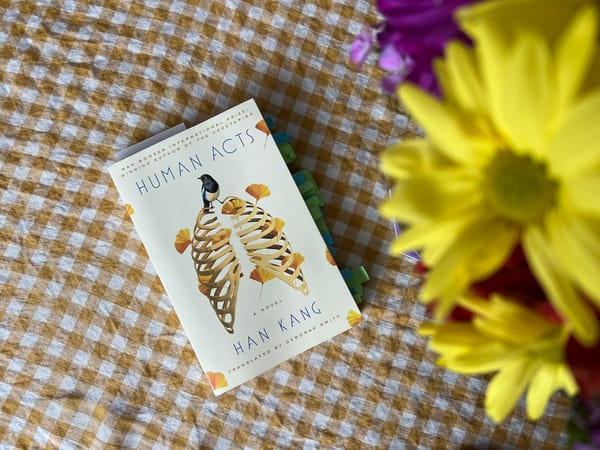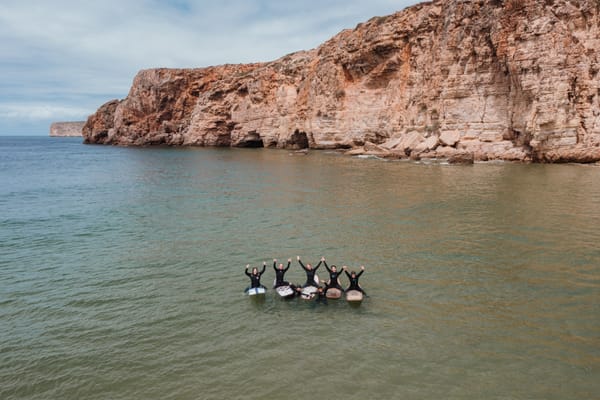Part 1: Eat in Barcelona
I took a one month Europe trip from mid April to mid May. I had already booked a one way ticket to Spain for a close friend’s wedding so I extended the trip to visit four cities in three different countries: Barcelona, Hamburg, Berlin, and Lagos. I joked to my friends that this trip was my version of “Eat, Pray, Love” except I’d rename it to “Eat, Dance, Surf” — Eat in Barcelona, Dance in Berlin, and Surf in Lagos. More accurate phrase would be “Eat, Reconnect, Dance, Surf” since I visited four cities, but “Reconnect” in Hamburg was a reunion with high school best friends. I decided to keep that part only in my journal.
Trip Itinerary (about a week in each city):
- Barcelona 🇪🇸
- Hamburg 🇩🇪
- Berlin 🇩🇪
- Lagos 🇵🇹
“Eat” in Barcelona, the city of Gaudi
My college friend’s small wedding in Olivella, Spain right before the Barcelona trip was wonderful. It was intimate and fun, but at the same time bittersweet since I was reminded of college days which reminded me of my ex, who was my college sweetheart and first love.
For the first time, I was at a wedding alone surrounded by friends who have known me and my ex for more than a decade.
When it was time to leave for Barcelona to start my solo Europe trip, I was ready to be on my own to decompress.
St. Jordi, the Day of Books and Roses
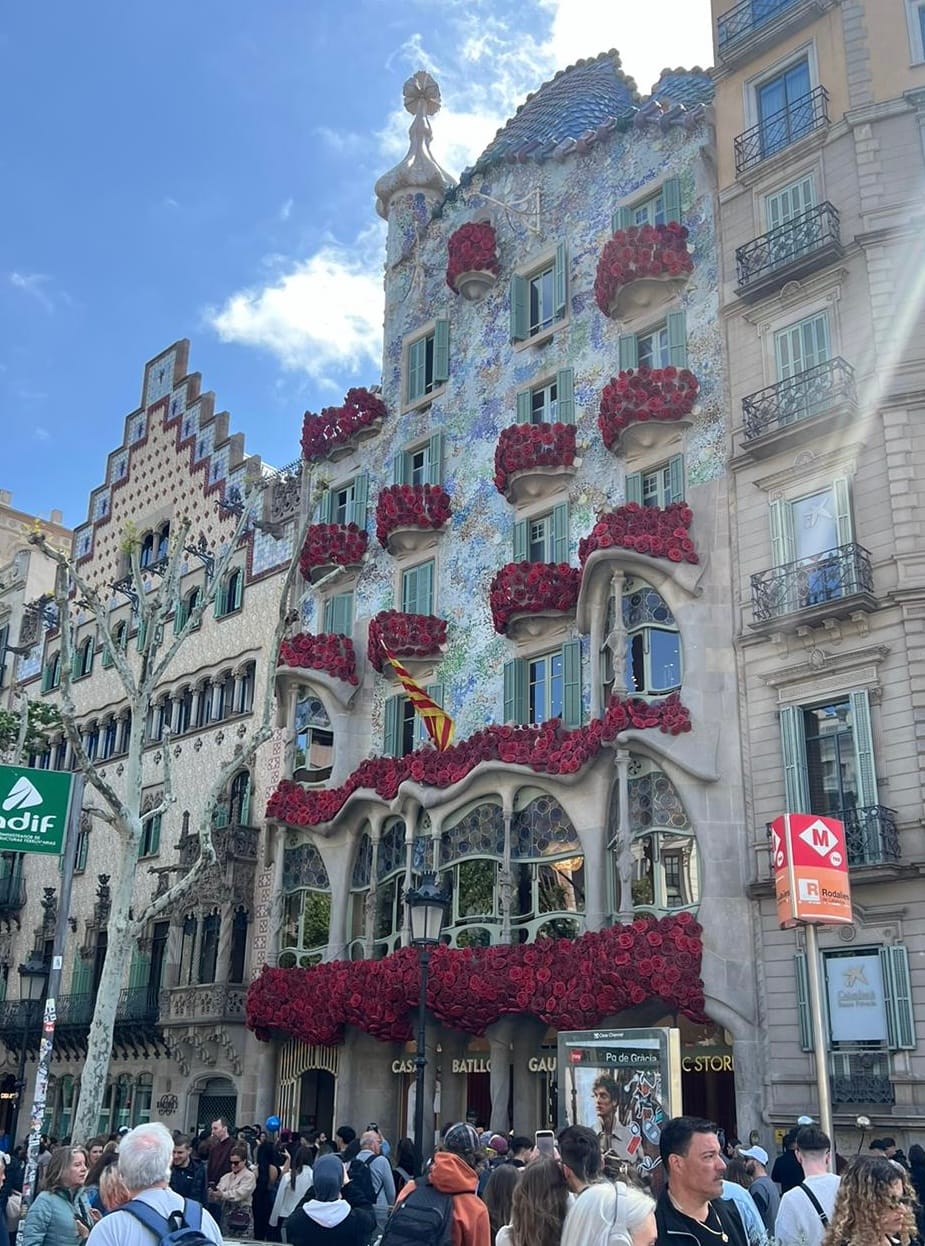
Visiting La Ramba for St. Jordi, the Day of Books and Rose was ChatGPT's top recommendation for things to do in Barcelona for the week of April 22. It's a celebration of both the Valentine’s Day and World Book Day on the same day. The street was covered with books and mostly red roses. I wasn’t going to purchase a red rose for myself, but I walked past a small shop where florists were making a bouquet from scratch with a variety of color of roses. I was intrigued and decided to purchase one to celebrate St. Jordi.
I picked a yellow rose and lavender flowers because they are my favorite combination of colors. I had known that yellow roses symbolized friendship, but I learned that a single yellow rose symbolized “new beginnings”. The bouquet accompanied me on my travel to Hamburg a week later and lasted for close to three weeks.
La Ramba
my bouquet
Traditionally, women gifted men books, and men gifted women roses. Nowadays, people of all genders exchange both books and roses. Now that I got myself a rose, I wasn’t sure about gifting myself a Spanish book that I couldn't understand. Then I walked by a booth with a pile of books with a cover that was in the same color as my yellow rose. I paused to take a look. The author saw my rose and she smiled. I smiled back. I thought about purchasing it then I thought 'I doubt I’ll read it' and I walked away. When I reached the end of La Ramba, I turned around and walked back to the booth.
The book was a collection of poetry on love. The author of the book was only 21 years old so I was curious to read her thoughts on love. I opened the book at random pages and scanned them with a translator app. I felt desperation, appreciation, sadness, and happiness from the ones I read. I wondered if they were written for one person or more. I remember reading different emotions about my ex from my old journals, which makes sense because we were together for 13 years.
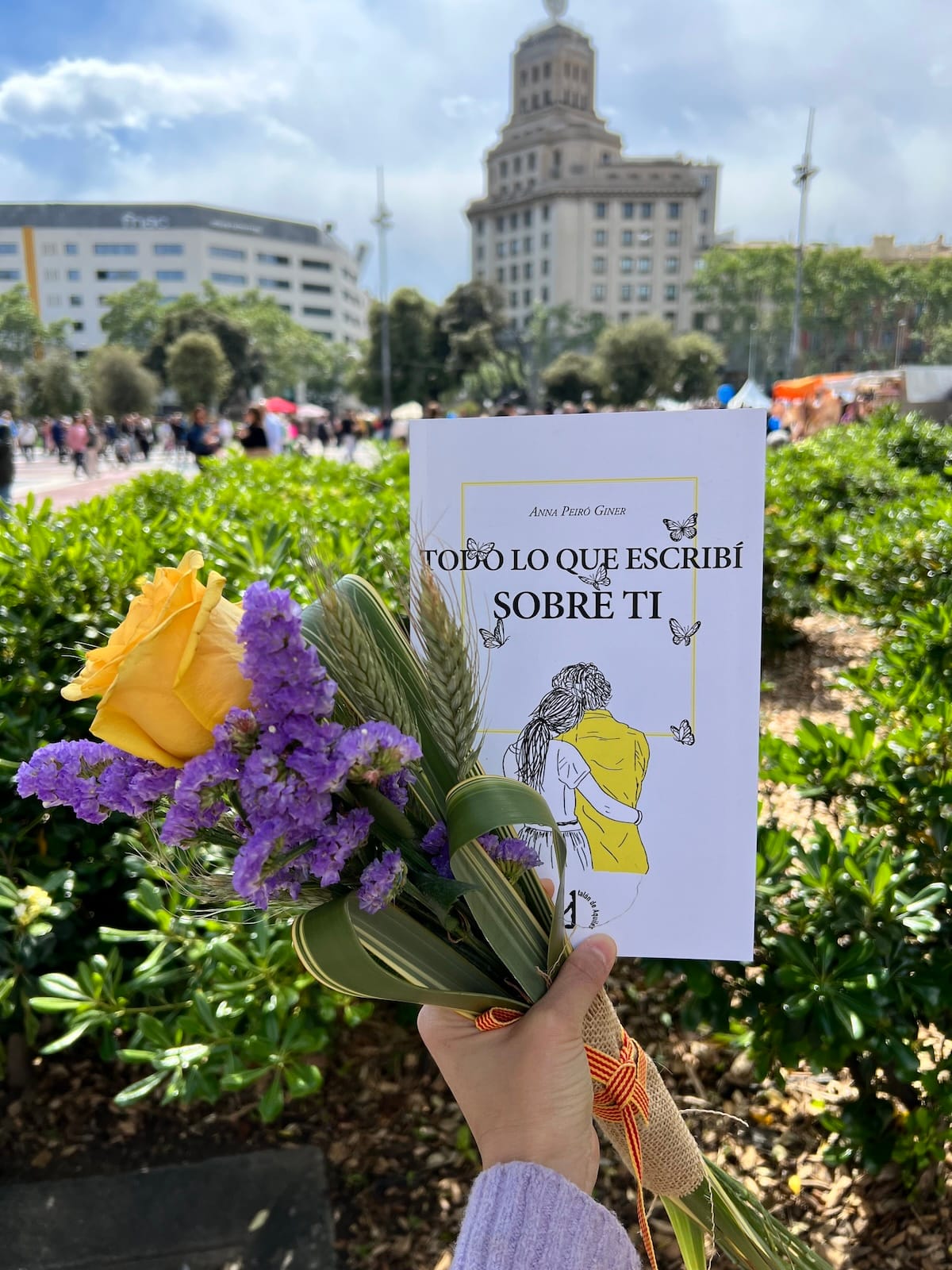
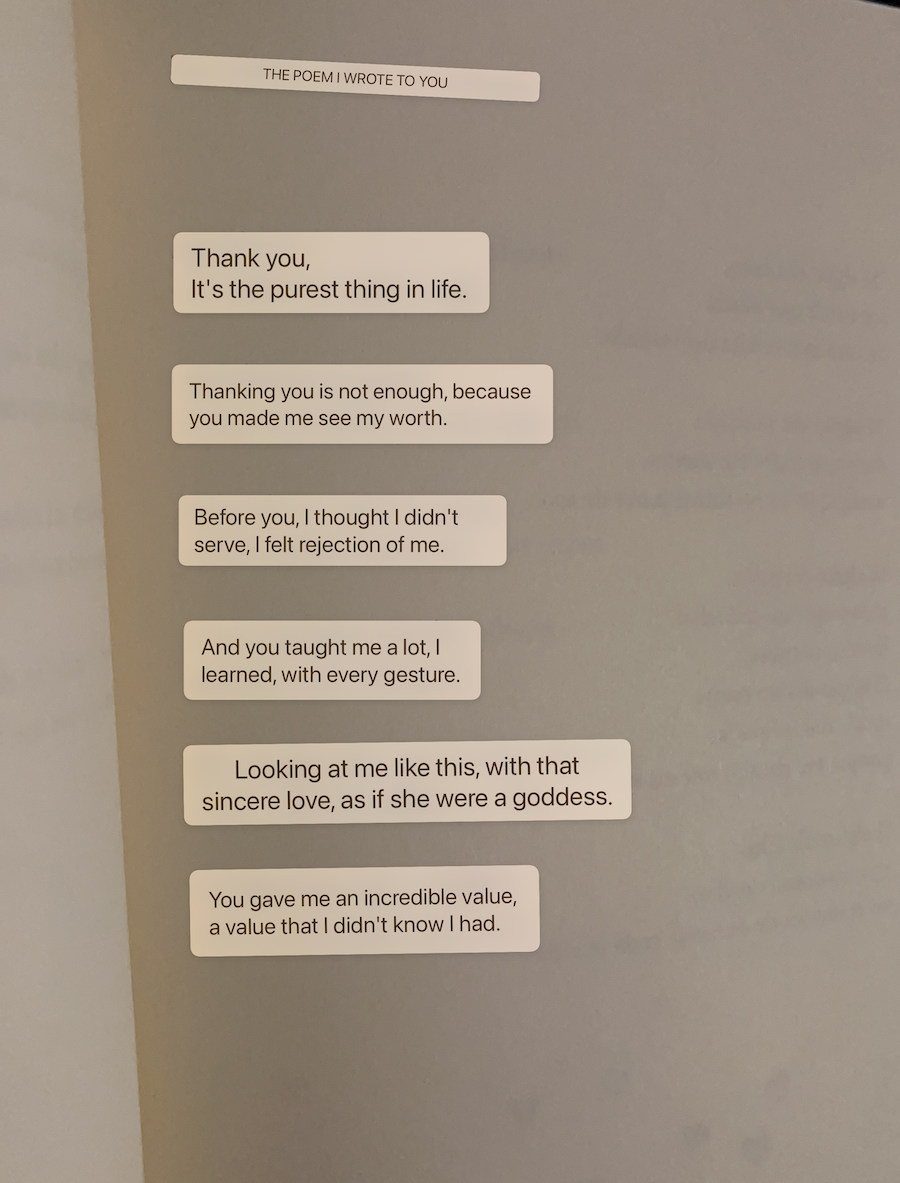
Tapas and Menú del día
For food, I asked friends on Instagram and strangers on AirChat, a voice notes social network app, on what I should must try in Barcelona. I enjoyed using AirChat so much during the trip because their recommendations felt personal compared to google maps reviews. Priyanka from AirChat, recommended to try Irati Taverna Basca (corner) and Menú del Día at any restaurant, a popular set menu served by Spanish restaurants during weekday lunch.
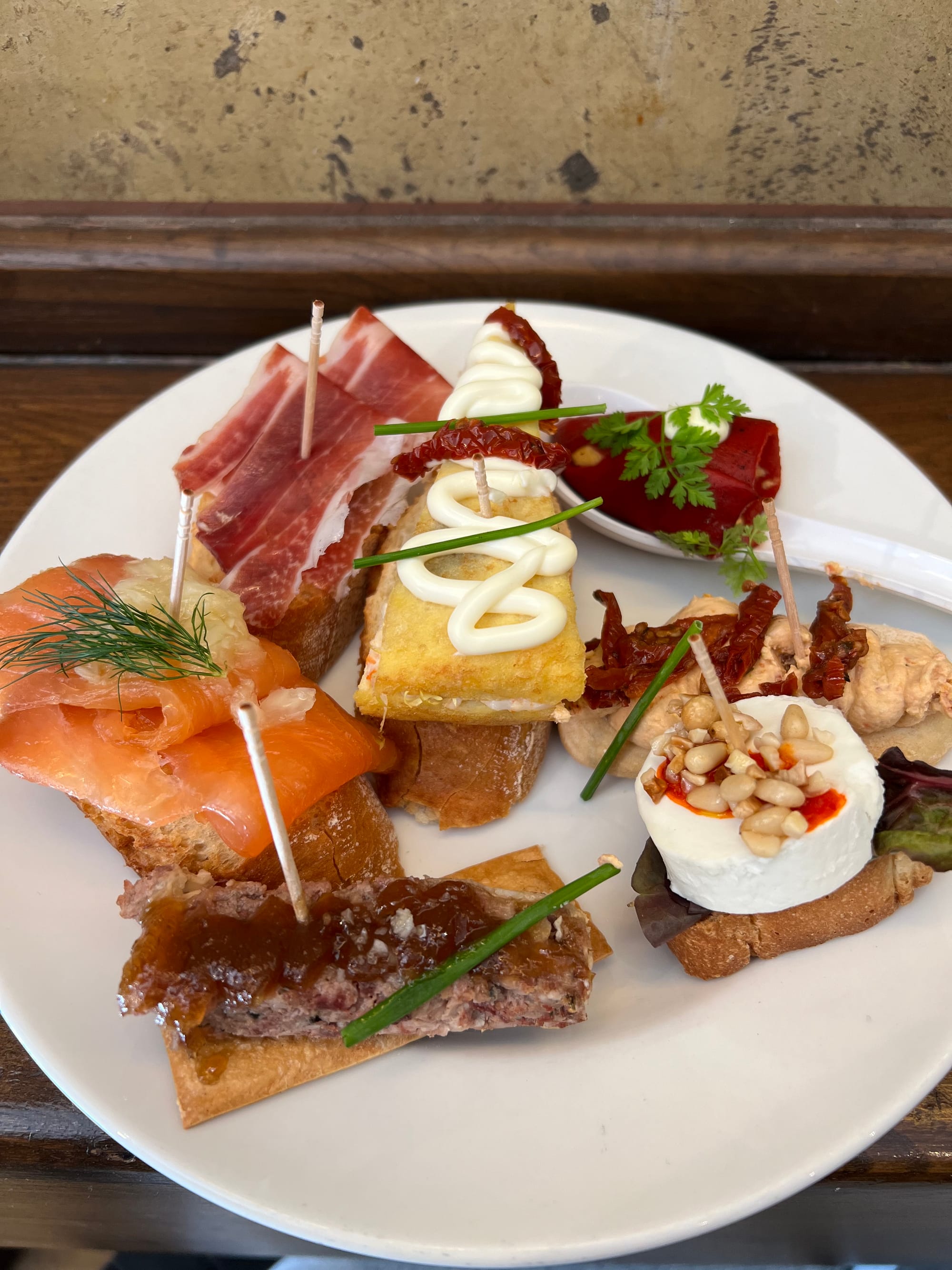
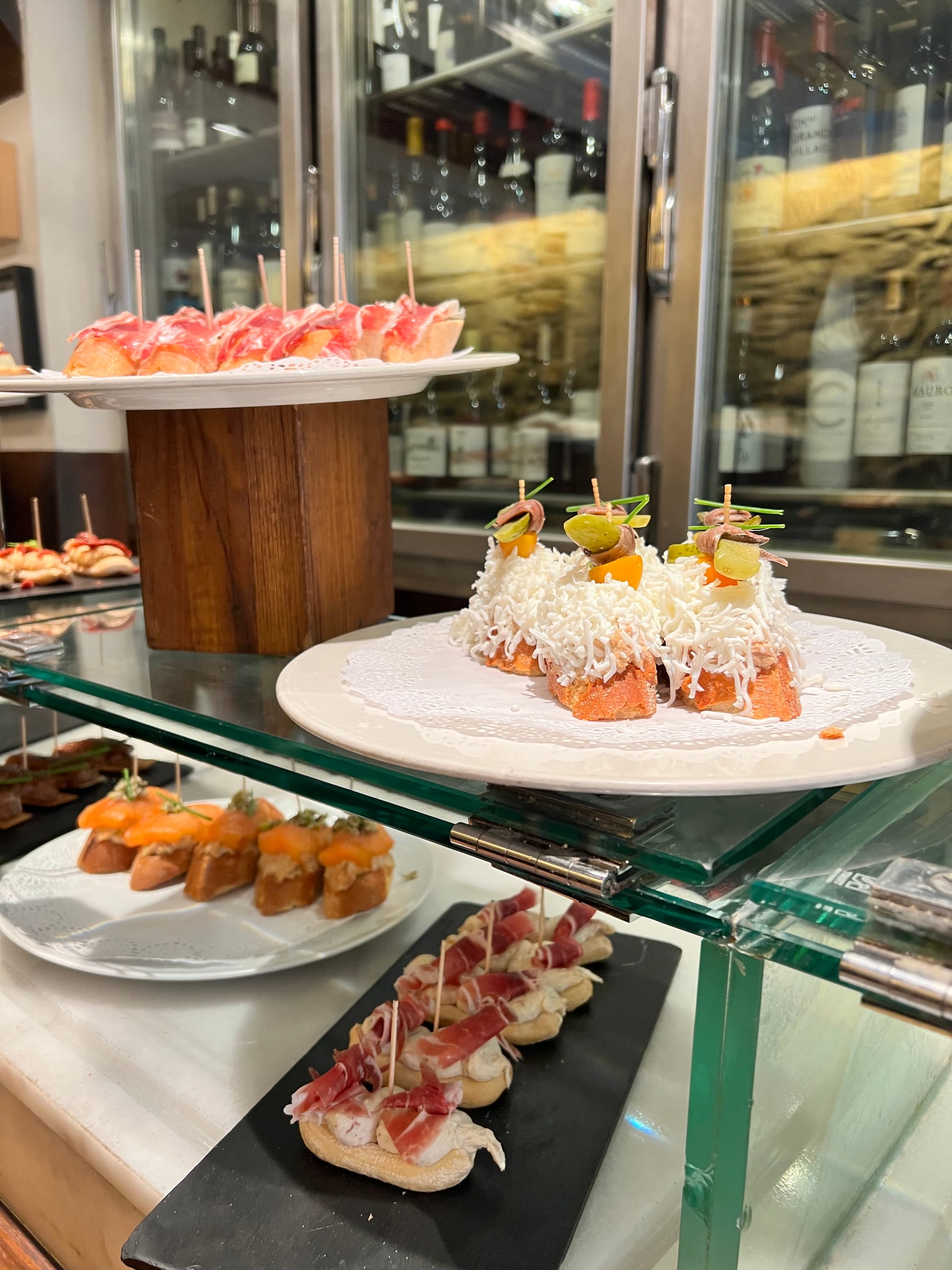
Irati Taverna Basca - each tapa costs 2.5 euro
Irati Taverna Basca’s atmosphere resembled a typical bar except instead of beer taps, the plates of colorful pintxos (small snacks) welcomed me. I grabbed a plate and piled it with pintxos. I was told to keep the toothpicks until I paid since my bill would be based on the total number of toothpicks. Each toothpick cost 2.5 euro. They were absolutely delicious and I went twice during this trip.
Another highlight dish is the Menú del Día at Cal Boter. Unlike American tech bros who swear by intermittent fasting, Spanish people typically eat five meals a day, with its midday meal being the largest. This is when the Menú del Día, or “menu of the day” is served. A three course meal would typically cost 15 euros. I visited Cal Boter and enjoyed an appetizer, entree, dessert, and drink all for only 15,50 euro.


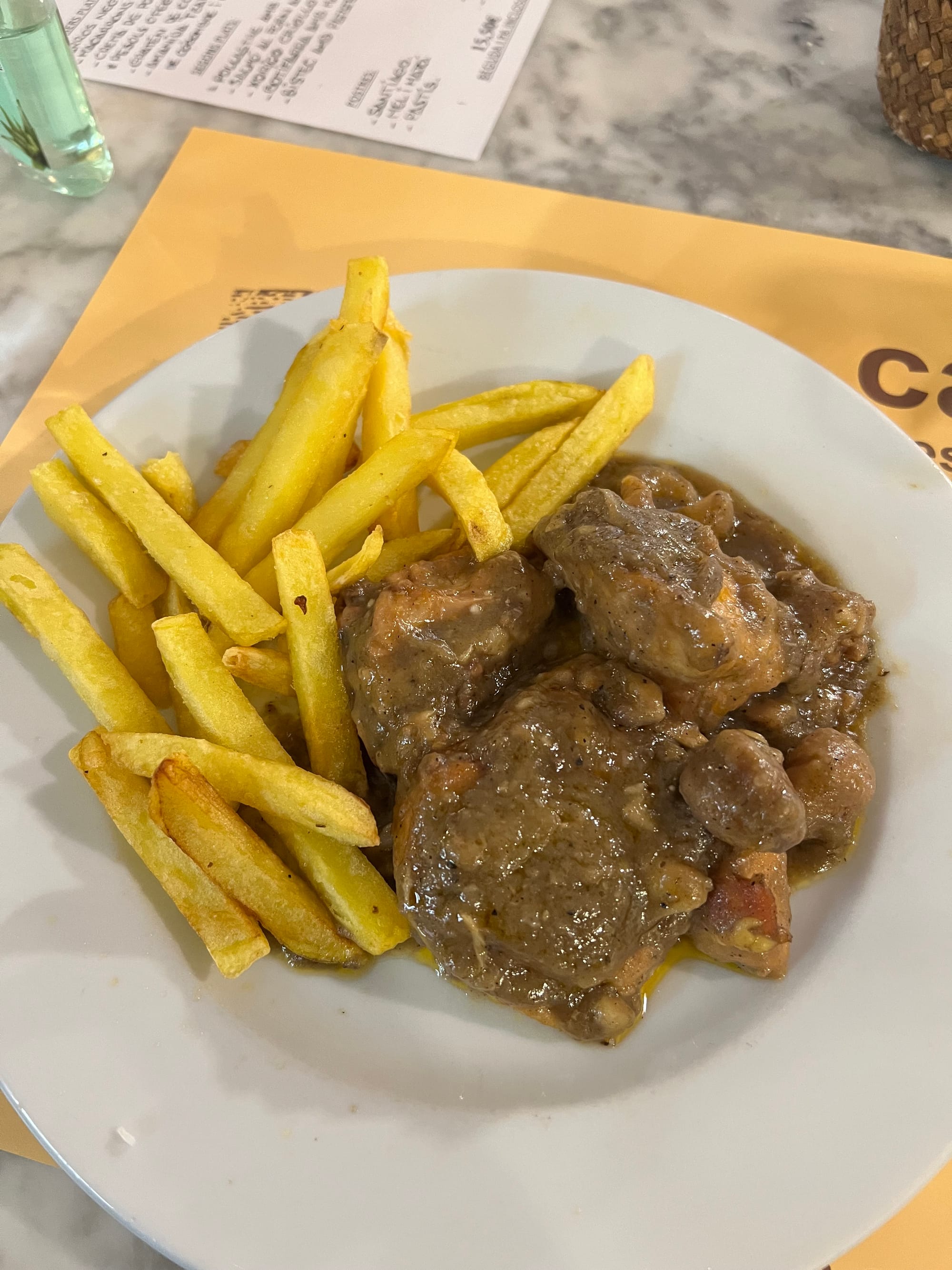
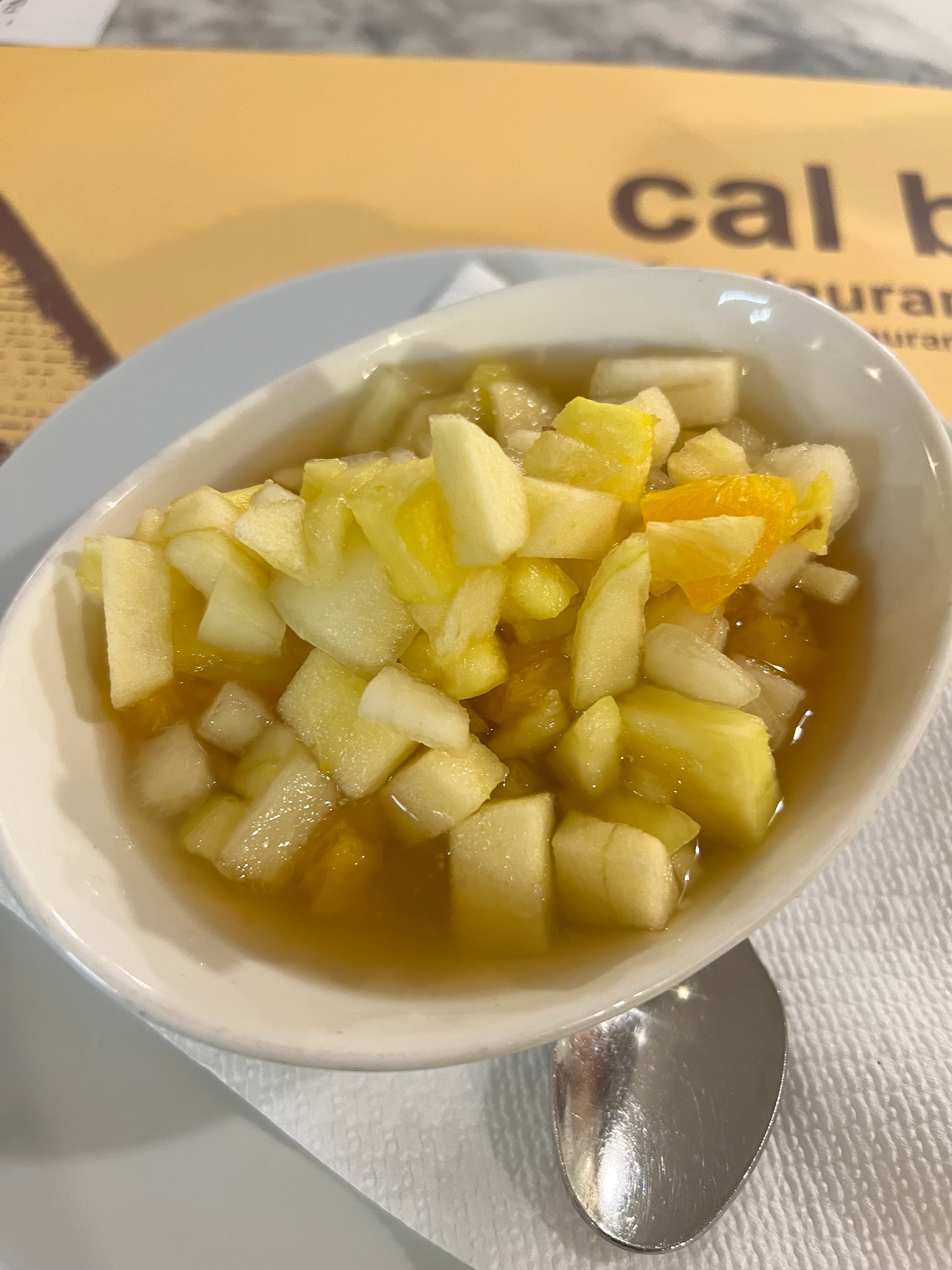
Menú del Día
I visited many restaurants including espai quera: llibres i platillos, a travel bookstore turned restaurant, La Plata, Mercat de la Boqueria, fismuler, and more. You can see the full list on my corner profile.

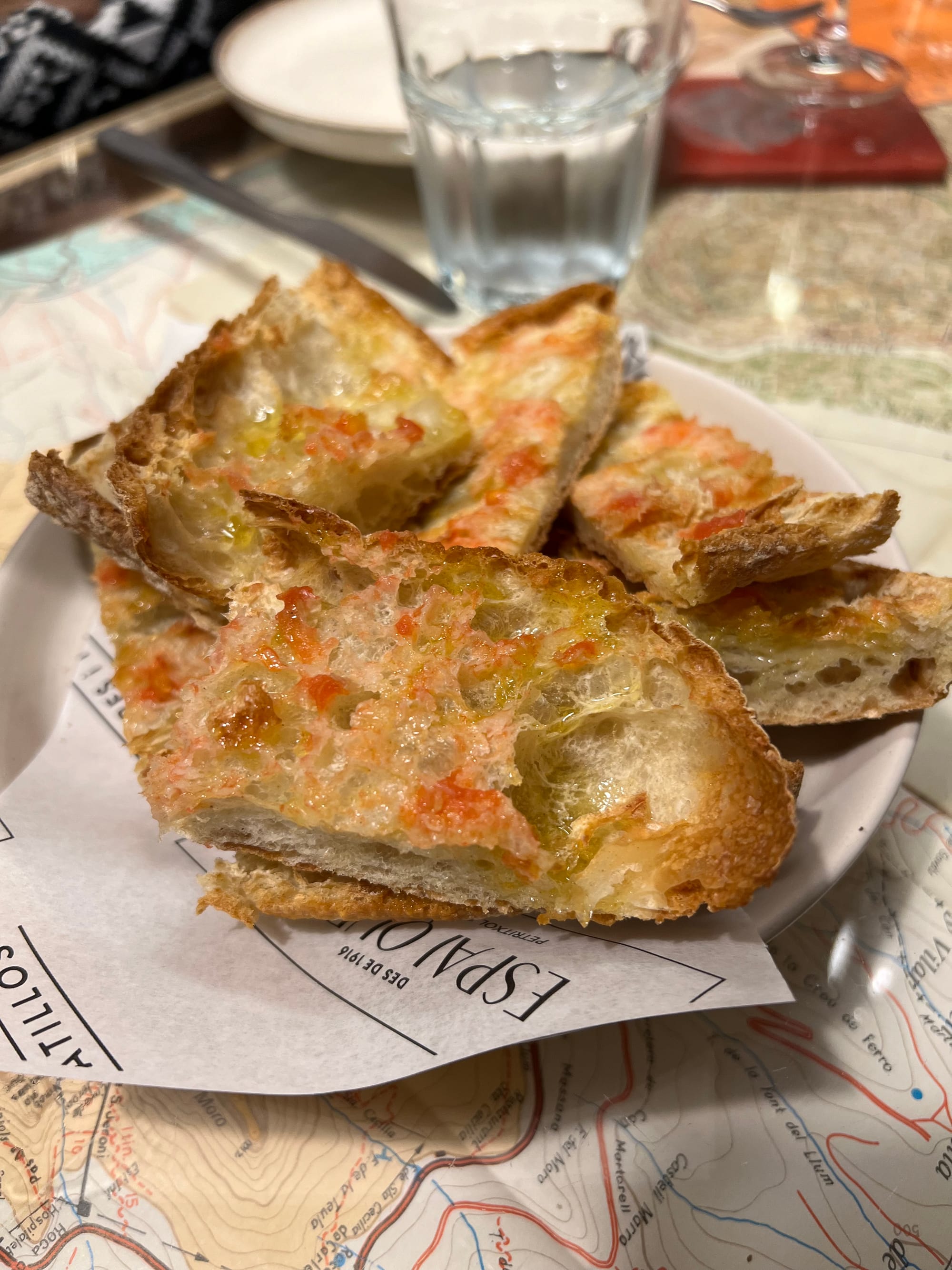
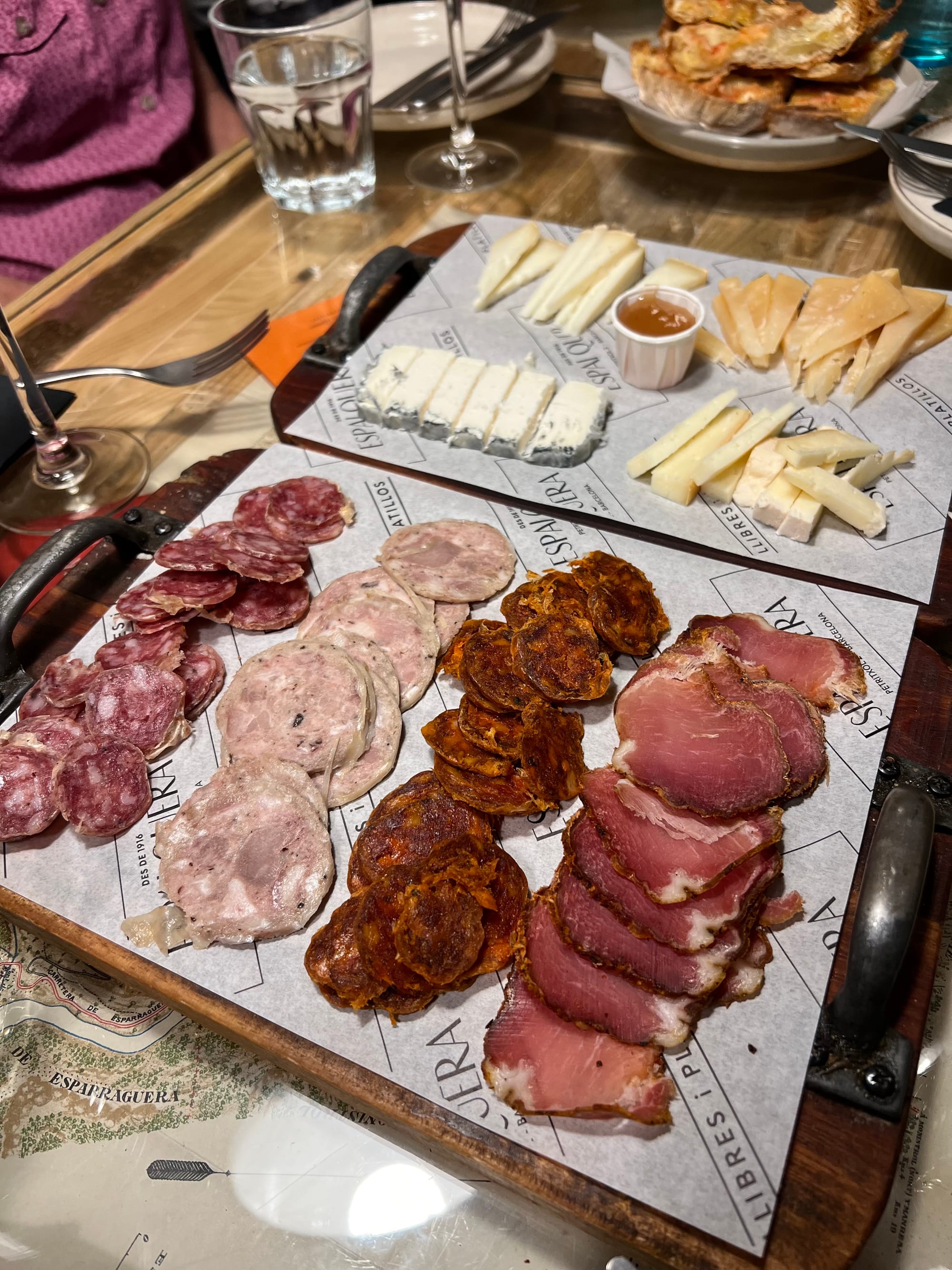
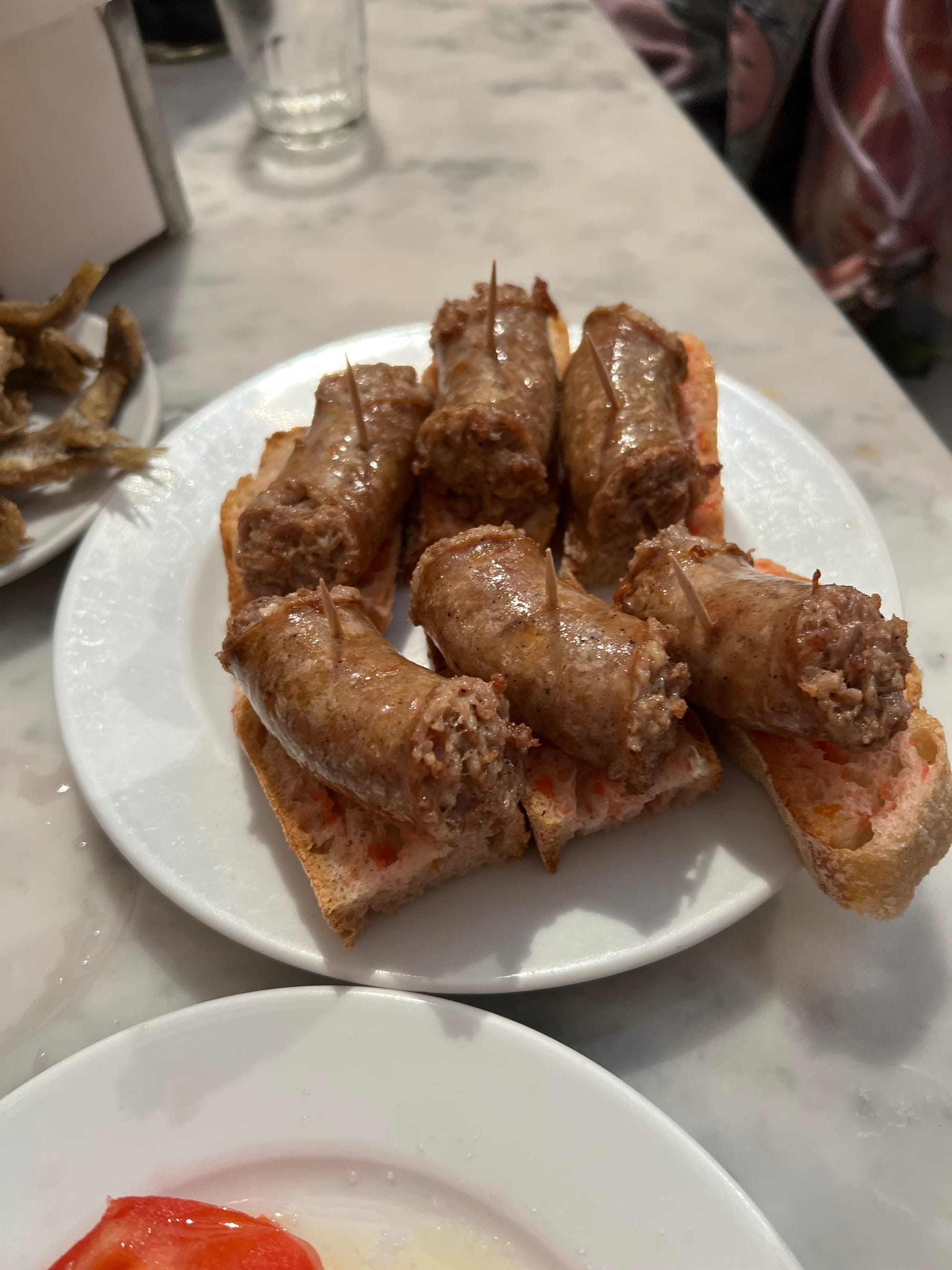
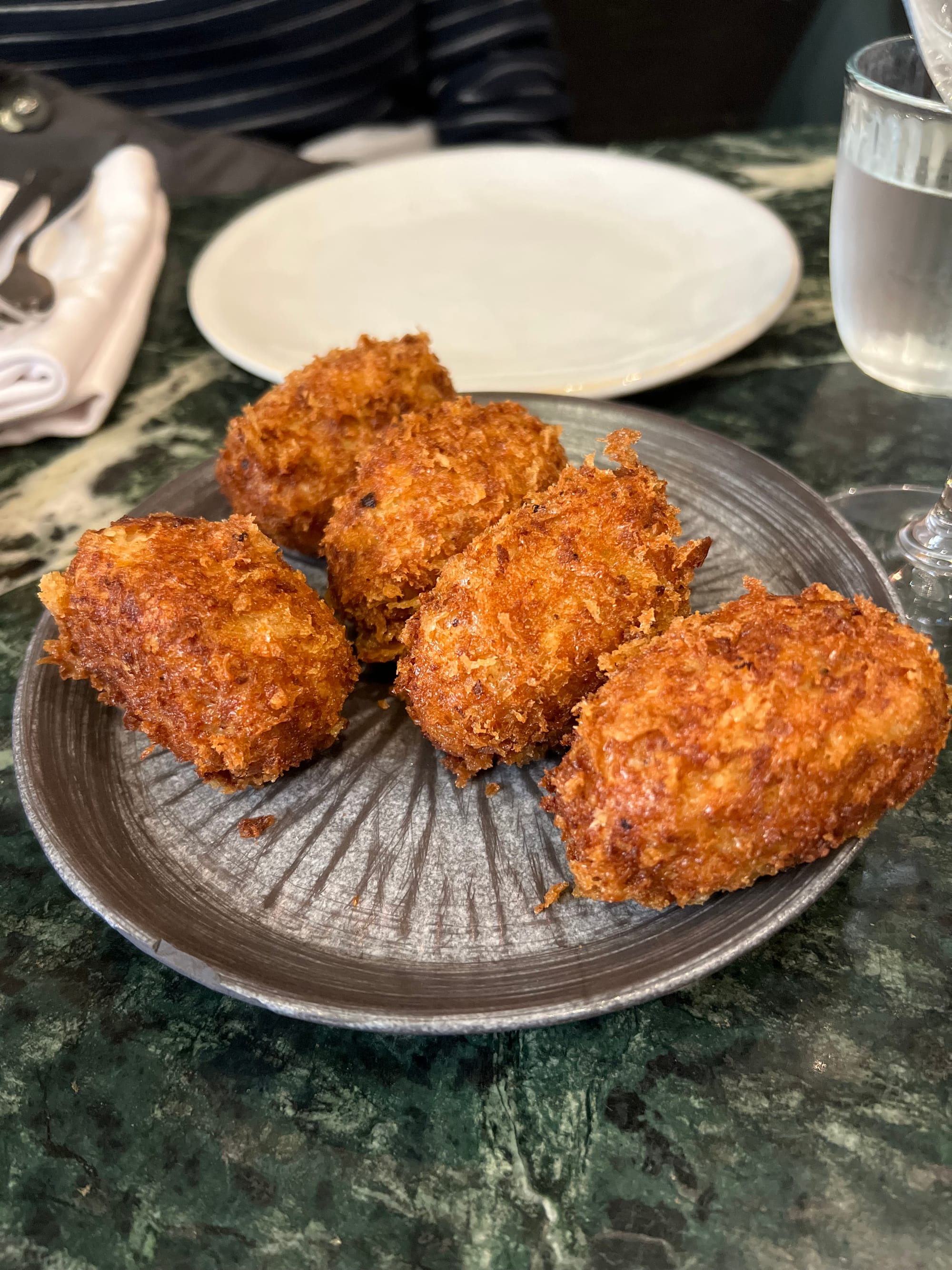
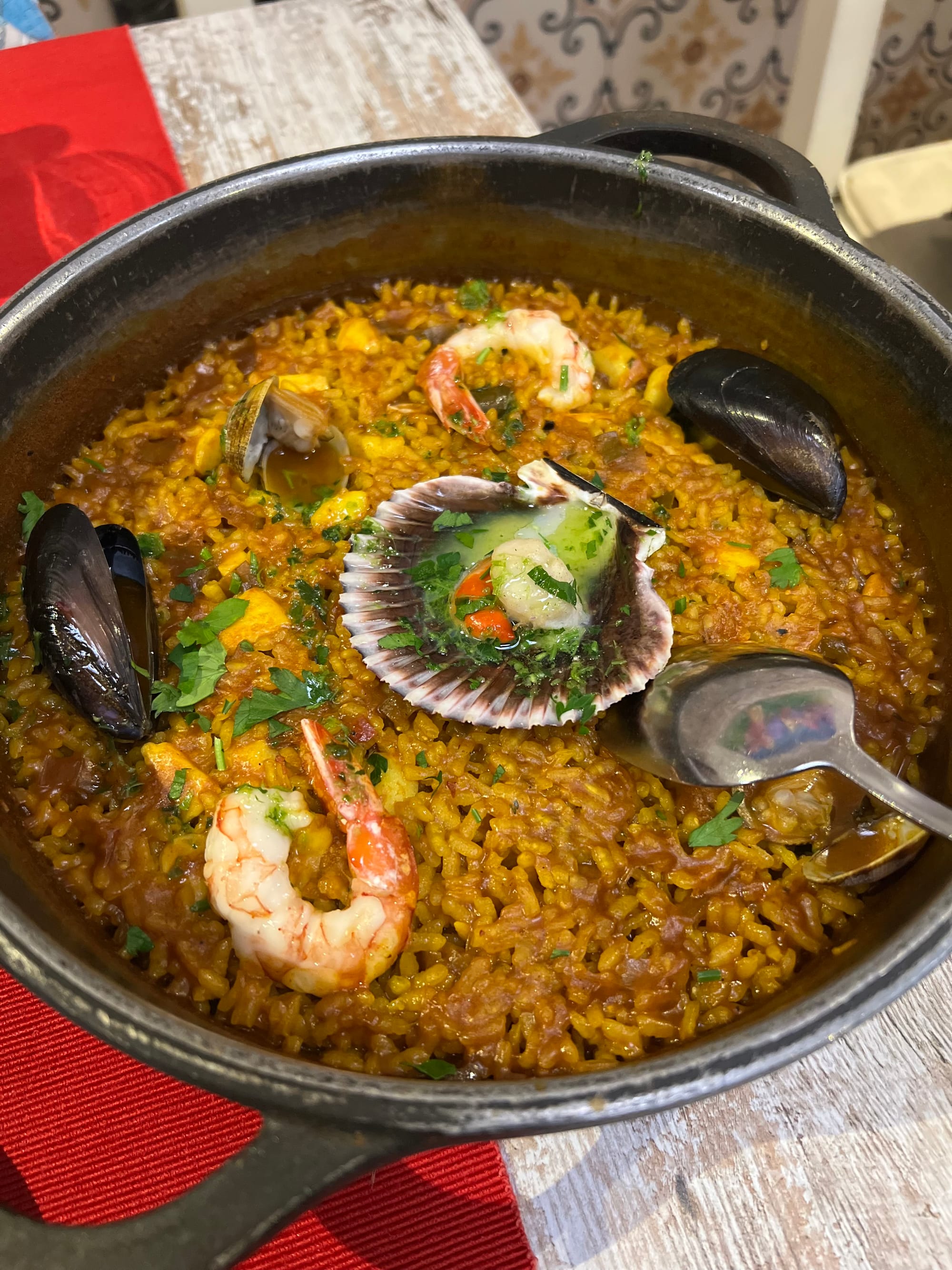
Beyond Food: Basílica de la Sagrada Família
“Barcelona is so beautiful, the city of Gaudi. You can feel his love for Barcelona through his art”
My mom told me on the phone before the trip.
My first encounter with Gaudi’s architecture was Casa Batlló, covered in roses, on St. Jordi's Day. Before I knew anything about him, I noticed the flowing curves and forms that mimicked nature. They felt oddly familiar. I later learned that this sense of familiarity is common among visitors; Gaudi's style, also known as “naturalistic architecture”, was deeply inspired by the geometry of nature. Standing inside his masterpiece, I felt as if I had stepped into a fairy tale.
Casa Batlló is a great example of using nature as an inspiration for decorative elements. A large spiral on the roof of the Grand Central Hall with the blue toned stained glass panes evokes an underwater environment. The feature of 60 catenary arches in the loft evoked the feeling of walking through the sand by the ocean for me.

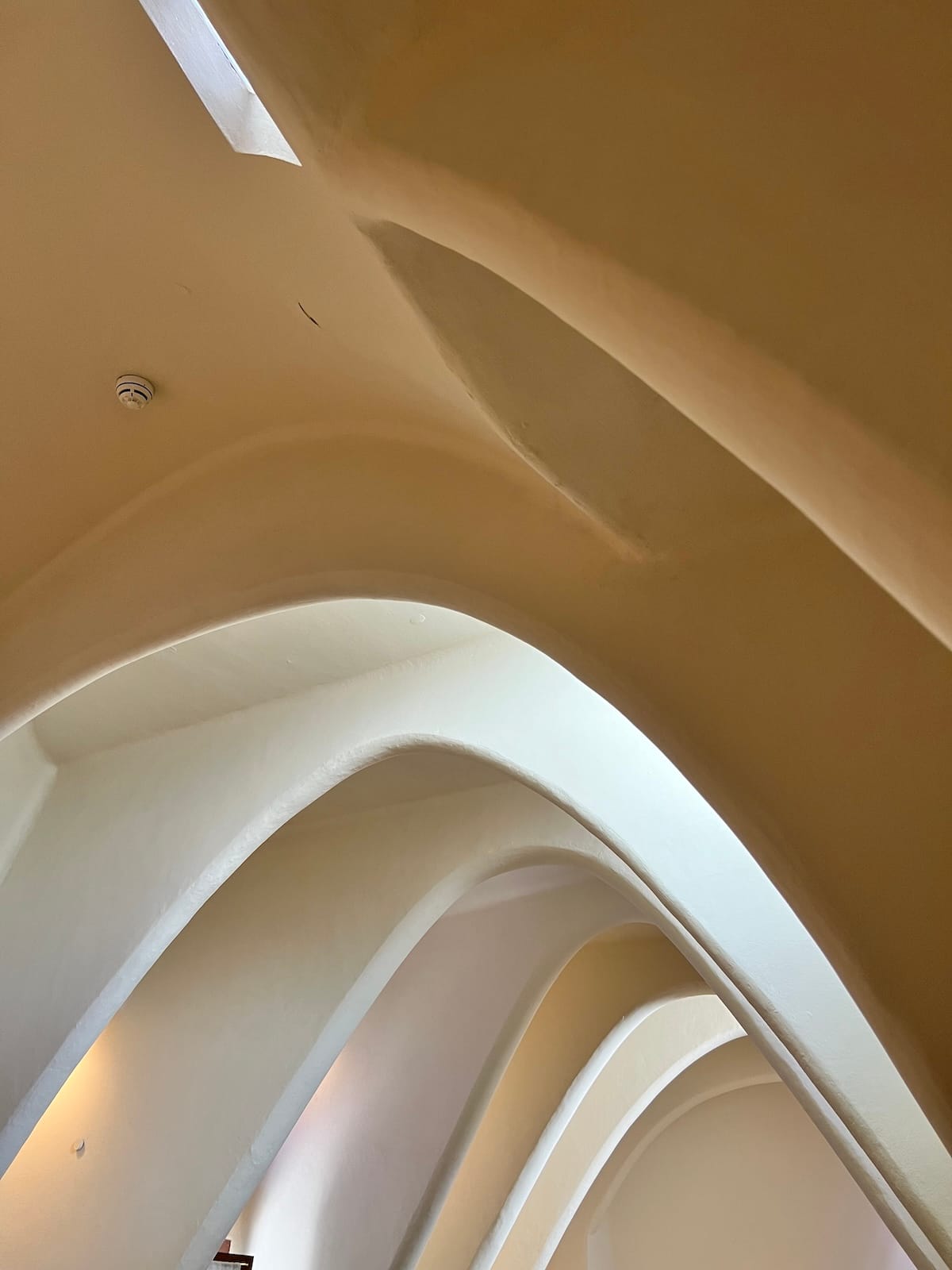
Casa Batlló
Basílica de la Sagrada Família is another great example of using nature as an inspiration for both decorative and structural elements. It was at Basílica de la Sagrada Família where I felt Gaudi’s love for Barcelona, nature, and his devoted Catholic faith. Sagrada Família was nothing like other high profile temples I had been to. Three were two surprises with Sagrada Família:
- Its drastic differences between the Nativity Facade and the Passion Facade
- An unusual sense of warmth and belongings inside of the temple
Starting from the Nativity Facade on the east side, the oldest among the three Facades with the most direct Gaudi influence, is dedicated to the early life of Jesus. It is divided into three porticoes, each representing a a theological virtue — Hope, Faith, and Charity. Unlike the Passion Facade on the west, which delivers grotesque expression, the figures on the Nativity Facade convey so much hope and joy.
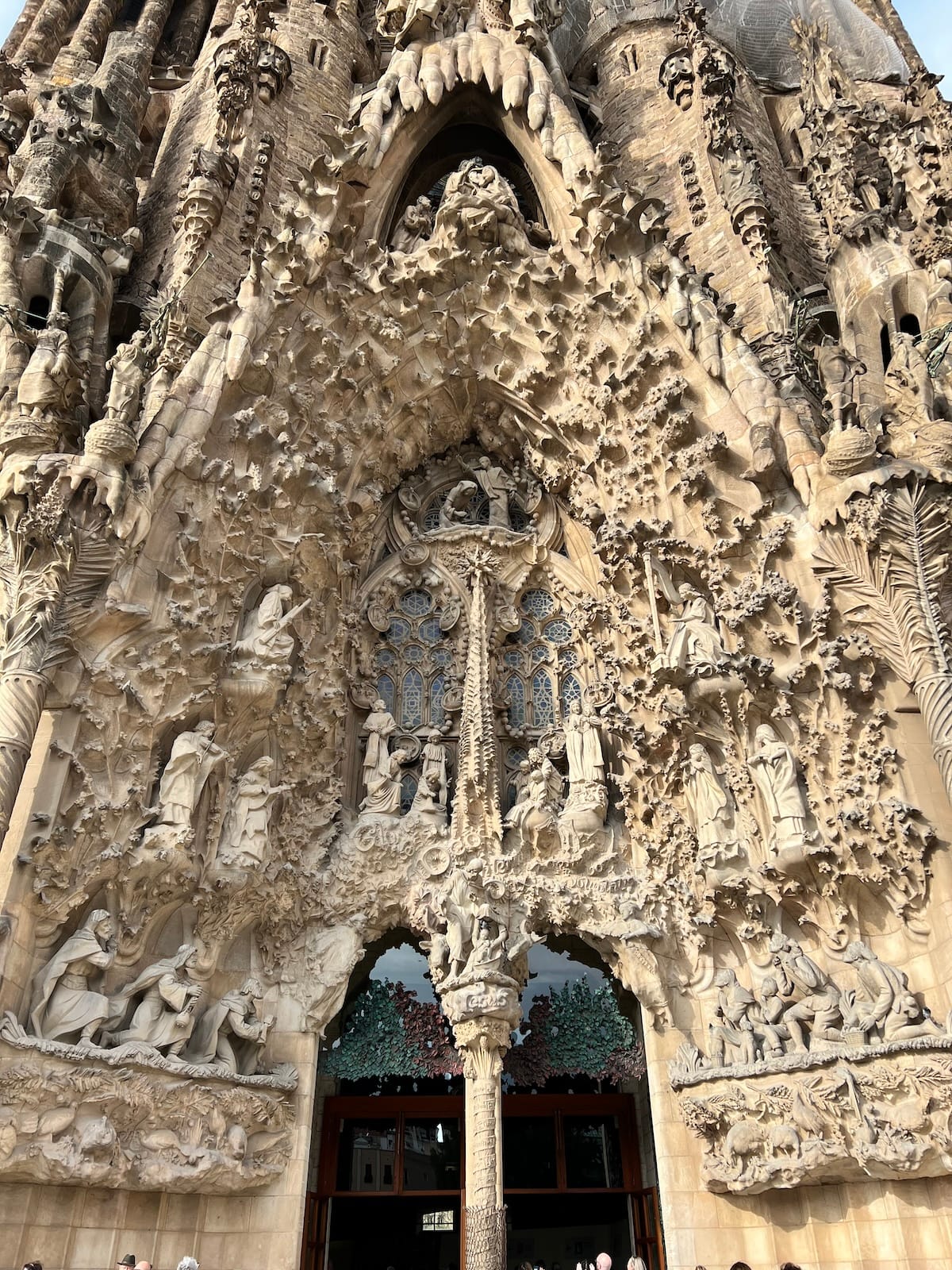
In Gaudi’s own words, the Nativity façade was meant to express the “joy and hope of life”. All of its decorations extol divine creation and call for brotherhood.
The temple’s interior, known as el gran bosc (the great forest), took my breath away as I stepped inside of the temple. I had never seen a temple so vibrant and radiant with so much sunlight in my life. This ample lighting was possible by incorporating natural elements into structure of the buildings. Its columns resembled trunks and branches holding up the vaults, with openings that let more natural light to stream in. I was left speechless. ‘How was he able to come up with this?’ I wondered. It was so unique and bold.

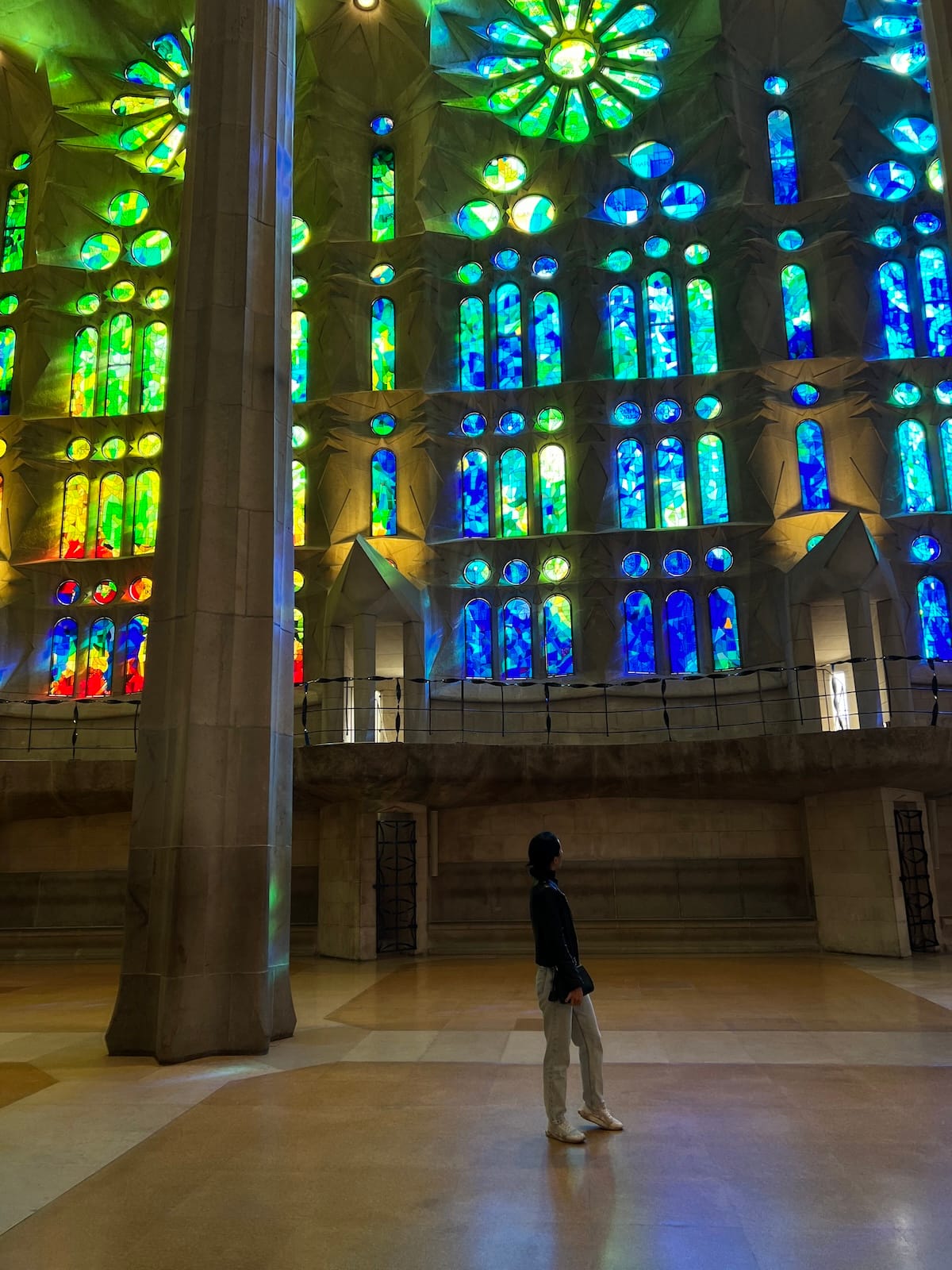
I spent about 45 minutes inside of the temple then I exited it through the Passion Facade. Similar to the Nativity Facade, it is also divided in to three porticoes representing the Passion, Death, and Resurrection of Christ. Unlike the Nativity Facade, the Passion Facade carries poignant essence.
Each figure resembles skeleton with a sad expression. Their facial feature was chiseled with greater depth to create more contrast, employing chiaroscuro, “a technique that uses harsh light and dark angular shadows to create a dramatic effect”. Its direct contrast with the Nativity Facade was so fascinating that I went back and forth in between to truly appreciate it.
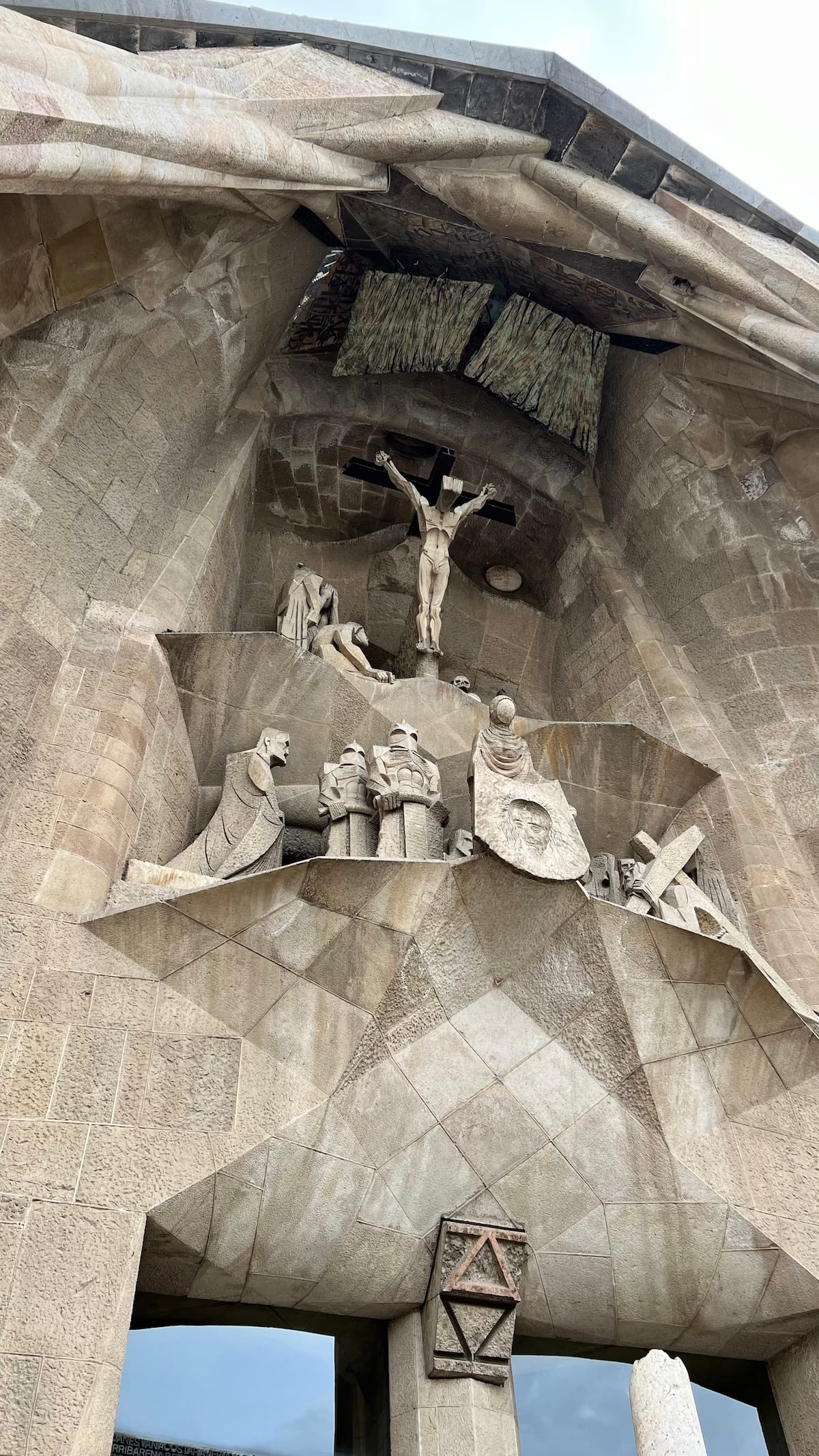
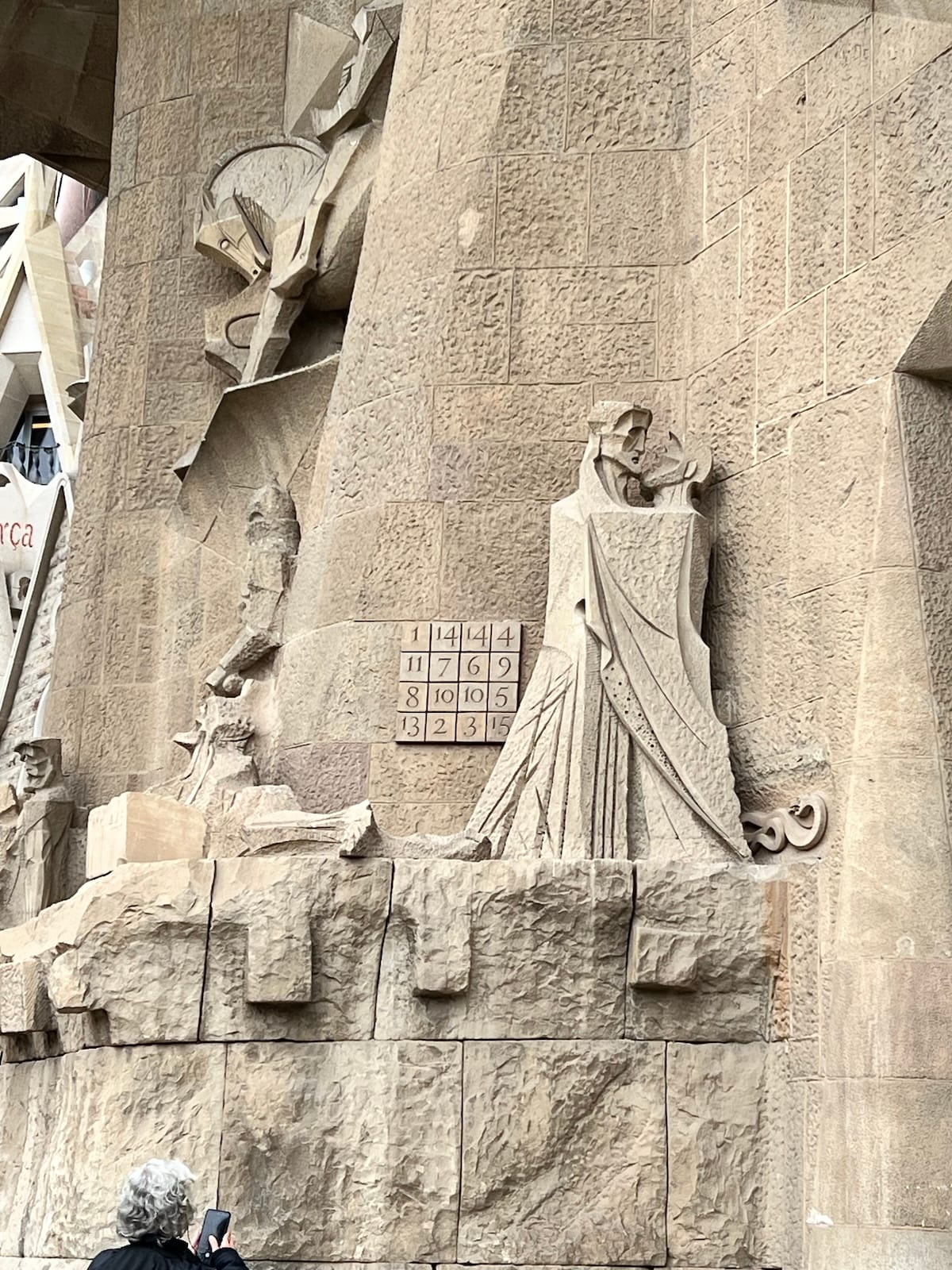
the Passion Facade (left) chiaroscuro (right)
The museum at Sagrada Família featured an exhibition on how the geometry of nature influenced Gaudi’s work. For instance, the conoid shape influenced the roof and walls of his school building, and the intersecting hyperboloids are displayed in the triangular rose window on the façade of the cloister and the columns on the Passion Façade.
I couldn’t help but wonder if my younger self, who disliked math, would have found it more interesting had she visited a museum like this.
“To do things right, first you need love, then technique”
- Antoni Gaudí
The geometry of nature. For Gaudi, nature was not only an inspiration for decorative elements, it went much further. It was also a model for developing structural and building elements. Geometric shapes are hidden throughout nature, which in the hands of the architect take on new life.
I left Sagrada Família feeling inspired.
While in Barcelona, I did many other activities: skateboarding, the Picasso Museum, the hill near Park Guell, shopping, and eating more AMAZING food. I didn’t take a day off from work in Barcelona.
By Day 5, I started to miss being with people, so I was eager to head to my next stop, Hamburg, Germany, to reunite with my best friends from middle school.
